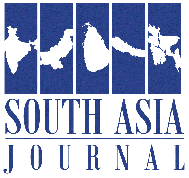
Fishermen row their boat on the Brahmaputra river in Guwahati, Assam state, India. © AP
Farwa Aamer is director of South Asia Initiatives at the Asia Society Policy Institute in New York. Susanne Schmeier is the head of the water governance department and an associate professor of water law and diplomacy at IHE Delft.
In the complex landscape of Sino-Indian relations, water epitomizes both vulnerability and strategic contention.
China’s approval of a massive dam on the Yarlung Tsangpo river — known as the Brahmaputra in India and the Jamuna in Bangladesh — reinforces its unilateral control as the upstream power. As nationalism shapes political narratives in both India and China, transboundary water resources have become a key flashpoint, testing whether their relationship tilts toward conflict or cooperation.
The bilateral relationship today teeters on guarded optimism after years of heightened tension following the 2020 clashes along the Line of Actual Control (LAC), their de facto border. While recent disengagement agreements and high-level gatherings — such as Indian Prime Minister Narendra Modi and Chinese President Xi Jinping’s meeting at the BRICS summit in October 2024 — hint at a tactical thaw, mistrust remains deeply embedded. India’s closer alignment with the West and its growing position as a counterweight to China in the broader Indo-Pacific region, add layers of competition to this multifaceted balance.
Amid these geopolitical crosscurrents, water is both a lifeline and a fault line in the bilateral relations. Nowhere is this more evident than in the shared yet contested waters of the Brahmaputra river system that sustains millions of lives across the region, accentuating its immense ecological, economic and geopolitical significance.
Yet, in recent decades, the river has increasingly become a source of friction driven by China’s ambitious dam-building spree.
The Zangmu Dam, inaugurated in 2014, marked the beginning of this contentious chapter, inviting downstream scrutiny and prompting New Delhi to demand greater transparency from Beijing.
While China contends these dams are intended for hydropower generation, its unilateral moves in the region — coupled with expansive infrastructure projects — are often perceived as an assertion of territorial and strategic claims in Tibet. For India, the specter of manipulated water flows raises alarms, given its dependence on the river for critical resources. Although no concrete evidence confirms such intentions, these developments deepen India’s apprehensions about the strategic securitization of shared water resources.
This dynamic is exacerbated by the absence of any legally binding transboundary water treaty or strong cooperation mechanism between the two nations. The lack of institutional safeguards creates a vacuum where unilateral actions, like dam construction or data withholding, are seen as tools of geopolitical posturing. A stark example of this was during the 2017 Doklam standoff, when China allegedly withheld critical hydrological data despite an existing memorandum of understanding, which severely hampered flood protection capabilities in India. Interpreted as a strategic maneuver to exert pressure on India, this episode exposed how water can be securitized and wielded in broader geopolitical gamesmanship.
The Brahmaputra river accounts for almost 30% of all surface water in India and provides 44% of the country’s hydropower potential. Already, climate change has contributed to periodic drops in water levels in recent years, underscoring the river’s vulnerability and the critical need for sustainable management.
India’s primary concern is that China could exploit shared water resources to address its domestic challenges through its dams. With per capita water availability in China declining rapidly, there is apprehension that Beijing could divert water to its increasingly arid northern regions through its South-North Water Diversion Project, a huge attempt to address the stark contrast in water resources between southern and northern China.
Central to these concerns is the new Medog Dam, first announced as part of China’s 14th five-year plan in late 2020 and then formally approved in December last year. This dam, touted as the world’s largest hydropower project, is also strategically and controversially located near India’s northeastern state of Arunachal Pradesh — a region China claims as “South Tibet.” While described as a run-of-river project, Beijing’s reluctance to share detailed design and operational information has heightened Indian suspicions.
It is important to note, however, that much of the Yarlung Tsangpo-Brahmaputra Basin in China lies in a rain-shadow area with limited contribution to the river’s flow. The river gains significant volume as it enters India, where precipitation and tributaries contribute most of its water. This geographical reality makes large-scale water diversion by China technically challenging and likely limited in scope. However, concerns remain due to the lack of full transparency regarding China’s activities. If the dam is constructed with significant storage capacity, it could enable downstream disruptions, such as unnatural flooding or water shortages, posing potential risks to India’s water security.
Shared waters are often seen as threat multipliers in an already complex and tense environment, where political and water disputes intersect. Yet, they also offer a unique opportunity for trust-building and reconciliation, that is if riparian nations prioritize long-term benefits of cooperation over unilateral actions or nationalist posturing.
For India, leveraging bilateral mechanisms with China more effectively and adopting a strategy of issue-linkages, integrating water cooperation into broader negotiations on areas of mutual interest, can help frame water as a shared challenge rather than a zero-sum game.
India must also address water-sharing challenges with its other neighbors, especially Bangladesh, which is already grappling with reduced Brahmaputra flow, to set the stage for greater regional coordination and goodwill on shared natural resources.
The recent inclusion of transboundary water issues in high-level dialogue between India and China, following the LAC breakthrough, is a positive development, but significant challenges persist and water will remain critical to overall stability.
Ultimately, both India and China, as well as other regional actors, must ensure that shared waters do not become a securitized element. Clear and regular communication of the socioeconomic, ecological and geopolitical risks of noncooperation — and the mutual and tangible benefits of cooperation — should become a central tenet of water diplomacy in South Asia.
source : asia.nikkei

